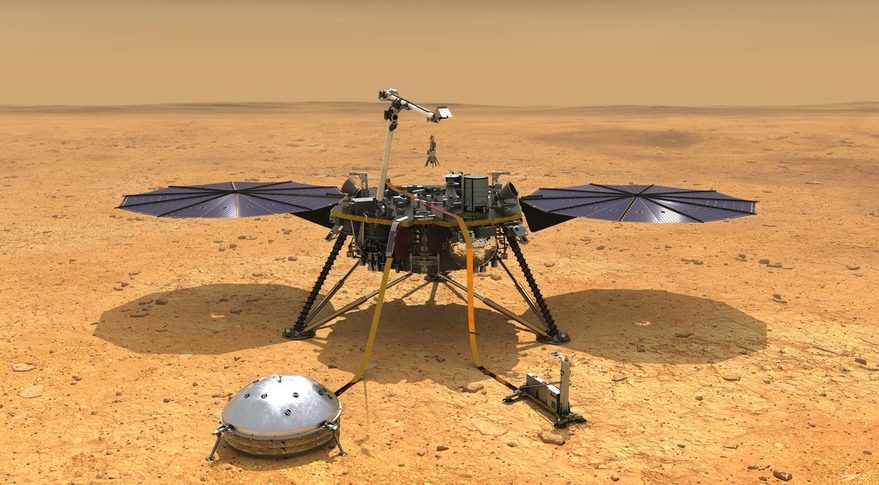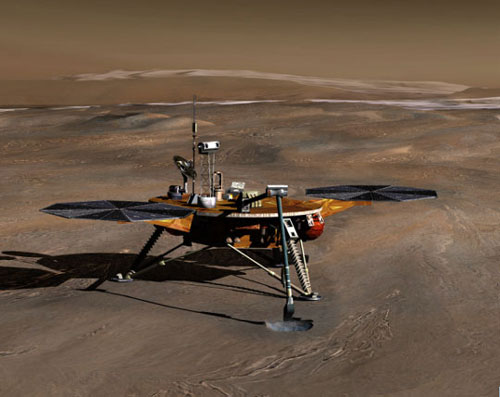This is a question I get a lot about InSight, Opportunity and Spirit. Why not have solar panel cleaning devices added to the spacecraft?
So let me try to tackle that question with a thread. Hopefully some smarter space engineers can add to it! https://twitter.com/maikgroenewegen/status/1360321334035767296

So let me try to tackle that question with a thread. Hopefully some smarter space engineers can add to it! https://twitter.com/maikgroenewegen/status/1360321334035767296
Robotic missions to Mars are competed like any other; they have to "earn" their chunk of the budget by being effective science missions at effective prices. 
This causes a very normal tension between "do a lot" and "don't cost a lot".

This causes a very normal tension between "do a lot" and "don't cost a lot".
InSight in particular is part of the Discovery program at NASA, which technically has a cost cap of around $500M. Program managers thus do everything they can to reduce the cost without sacrificing science.
You want to avoid taking instruments off, for example.
You want to avoid taking instruments off, for example.

One really effective way to reduce scope is to shorten missions. This has two big benefits:
1) Every year a mission doesn't operate is a year you don't have to pay salaries for those who operate it
2) Hardware on the spacecraft can be made cheaper if it doesn't have to last
1) Every year a mission doesn't operate is a year you don't have to pay salaries for those who operate it
2) Hardware on the spacecraft can be made cheaper if it doesn't have to last
That second point is really critical.
The testing program you have to put stuff through doesn't scale linearly. A mission that lasts twice as long costs *more* than twice as much to test. It spirals fast.
The testing program you have to put stuff through doesn't scale linearly. A mission that lasts twice as long costs *more* than twice as much to test. It spirals fast.
In InSight's case, they also saved money by reusing a spacecraft bus design from the Phoenix mission, which was also designed for a short mission - just 90 sols in fact.
See the similarity?
See the similarity?
So all of these reasons (staying under cost cap, reducing operation cost, reducing testing costs and saving money by reusing spacecraft busses) combined to drive a decision that InSight's prime mission is just 1 Martian Year (about 2 Earth Years), which it completed in November.
So the short answer to "why not add solar panel cleaning devices" is that they don't need them!
By the time the dust takes down the spacecraft, it will have completed its mission. It's an element of disposability, though NASA probably wouldn't characterize it that way
By the time the dust takes down the spacecraft, it will have completed its mission. It's an element of disposability, though NASA probably wouldn't characterize it that way

Now, often the vehicles last longer than their prime mission. Spirit and Opportunity, for example, blew past their prime mission of 90 sols.
All of NASA orbiters (ODY, MRO, MAVEN) have gone past their prime mission, too.
All of NASA orbiters (ODY, MRO, MAVEN) have gone past their prime mission, too.
And last November, InSight surpassed its prime mission.
When this happens, NASA reevaluates the vehicle's health & cost against further science it can do, and decides to either re-fund or end a mission.
InSight got the funding.
And so here we are making the best of that!
When this happens, NASA reevaluates the vehicle's health & cost against further science it can do, and decides to either re-fund or end a mission.
InSight got the funding.

And so here we are making the best of that!
NASA isn't scrambling to save a mission hampered by dust they forgot existed. They're doing their best to squeeze out more return on investment for the taxpayer on a spacecraft that has already completed its mission!

 Read on Twitter
Read on Twitter



